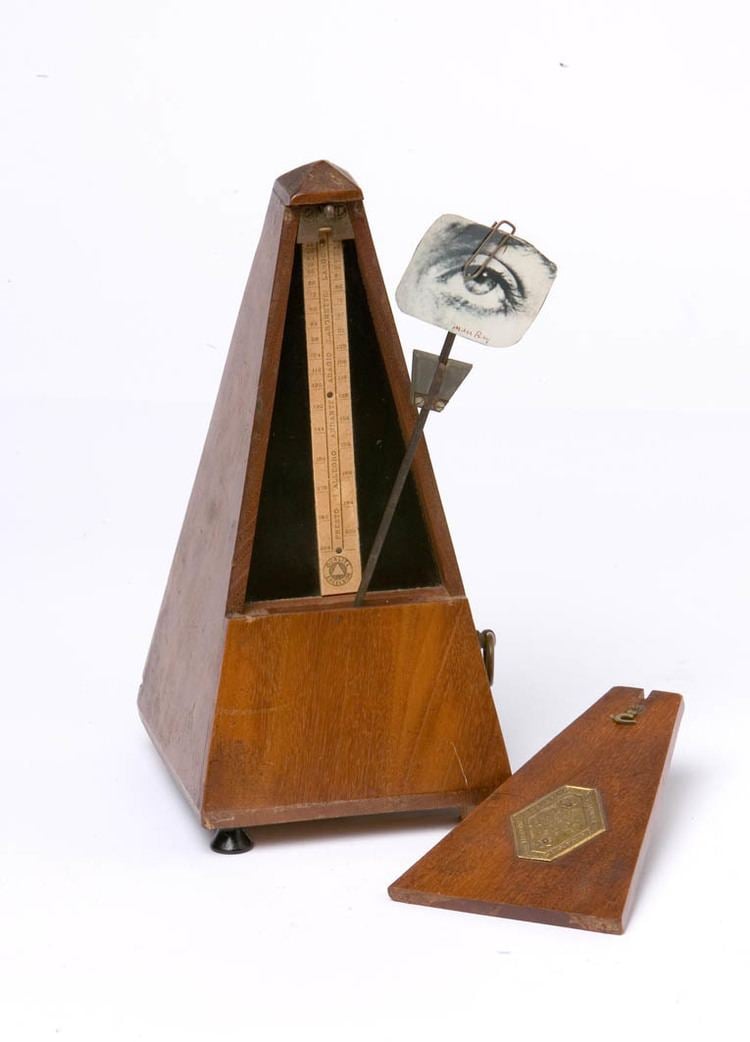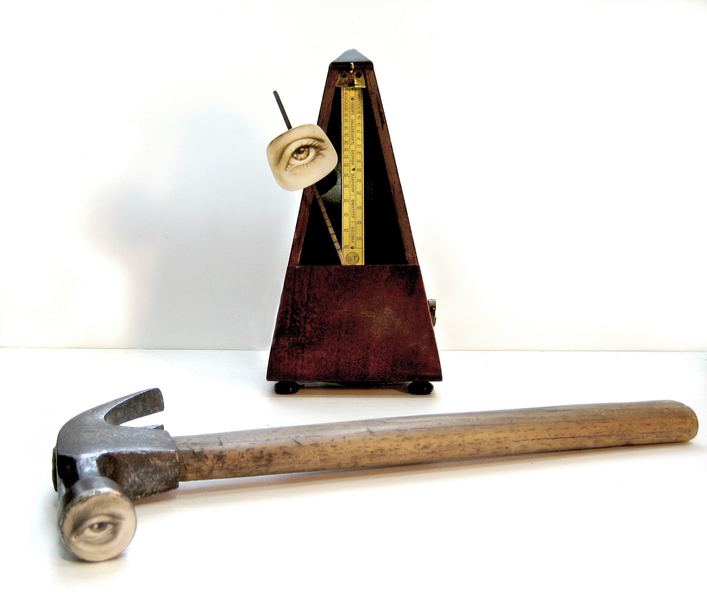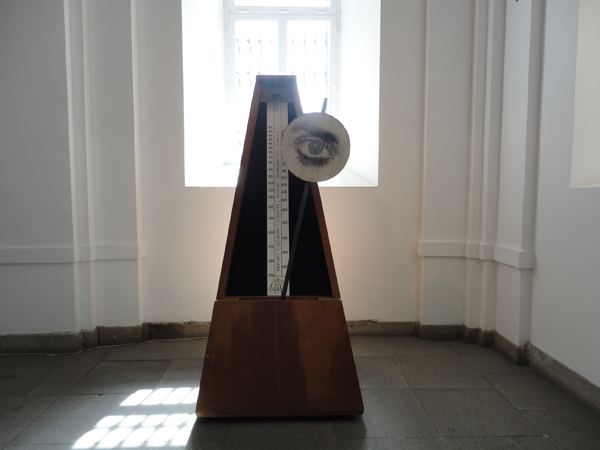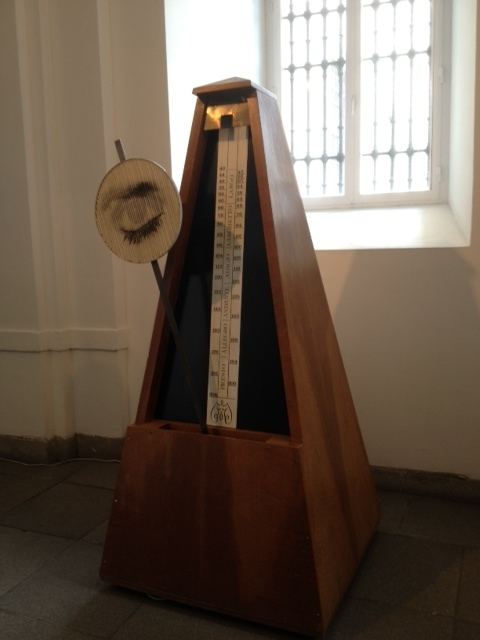Created 1923 | ||
 | ||
Similar Ingres's Violin, Gift, Why Not Sneeze - Rose Sél, Le Déjeuner en fourrure, Glass tears | ||
Man ray object to be destroyed
Object to Be Destroyed is a work by American artist Man Ray, originally created in 1923. The work, destroyed in 1957, consisted of a metronome with a photograph of an eye attached to its swinging arm. It was remade in multiple copies in later years, and renamed Indestructible Object. It is considered a "readymade", following in the relatively new tradition established by Marcel Duchamp of employing ordinary manufactured objects that usually were modified very little, if at all, as works of art.
Contents
- Man ray object to be destroyed
- The Original Readymade
- An Indestructible Multiple
- In popular culture
- References

The Original Readymade

The work consists of two elements. One element is a metronome manufactured by the Qualite Excelsior company. The other element is a small cutout of a black-and-white photograph of a woman's eye. The particular metronome is a mass-produced product that might be commonly found in many homes. It was probably secondhand when Man Ray reconfigured it as an art object, as it is marred, worn, missing minor parts and stands on mismatched feet, though its mechanism is in fair working order. Its box is made of wood, but its internal elements are made of metal. (Illustration here.) Its front door was removable.

The original Object to Be Destroyed was created in 1923. (See Readymades of Marcel Duchamp.) According to Man Ray, the piece was originally intended as a silent witness in his studio to watch him paint. In 1932 a second version, called Object of Destruction, was published in the avant-garde journal This Quarter, edited by André Breton. This version featured an ink drawing of the Object To Be Destroyed with the following instructions;

Cut out the eye from a photograph of one who has been loved but is seen no more. Attach the eye to the pendulum of a metronome and regulate the weight to suit the tempo desired. Keep going to the limit of endurance. With a hammer well-aimed, try to destroy the whole at a single blow.

1932 was the year Man Ray's lover, Lee Miller, left him to return to New York. To make the connection to Miller more explicit, the object's original eye was replaced with a photo of hers. This metronome was exhibited for the first time at Galerie Pierre Colle, Paris, as Eye-Metronome in 1933.

Subsequent exhibitions called the piece Lost Object, 1945, Last Object, 1966 and Perpetual Motif, 1972. Man Ray stated that he had always intended to destroy it one day, but as a public performance.
An Indestructible Multiple
In 1957, the object was being exhibited in the Exhibition Dada in Paris when a group of protesting students, led by the French poet Jean-Pierre Rosnay and calling themselves the 'Jarivistes', took Man Ray at his word and actually destroyed it.
'...the show was less than a week old when something like the excitement of the '20s erupted. Storming the gallery, a band of young, self-styled "reactionary nihilist intellectuals" who call themselves the Jarivistes flung handbills riotously into the gallery. "We Jarivistes advise the Dadaists, surrealists and consorts that the reign of minus is over . . . Long live poetry!" Then, grabbing Object to Destroy, they were gone—but with Dadaist Man Ray puffing after them, crying: "They're stealing my painting!" Not far from the gallery, the Jarivistes stopped and set down the one-eyed metronome. One of them hauled out a pistol, took aim and fired, destroying Object to Destroy. At that point the police appeared, late but ardent.
The Jarivistes readily announced that they "are not surrealists but sure realists," not a movement but "motion itself, perpetual motion." To their objections to Dada, Man Ray wearily noted: "These things were done 40 years ago. You are demonstrating against history." A police official mused: "Why shoot it?" But last week, as visitors flocked to the show, Tristan Tzara, the grand old man of Dada, was delighted. "Isn't it wonderful?" he murmured nostalgically.' Time Magazine, April 1957
The artist used the resulting insurance pay-out to create an edition of 100 multiples, entitled Indestructible Object. This was an allusion to the indestructible nature of the original idea, as well as the difficulty in destroying all one hundred. The multiples were fabricated by Daniel Spoerri's Edition MAT.
Examples of the work are held in various public collections including Tate Modern London, MOMA New York and Reina Sofía, Madrid.
